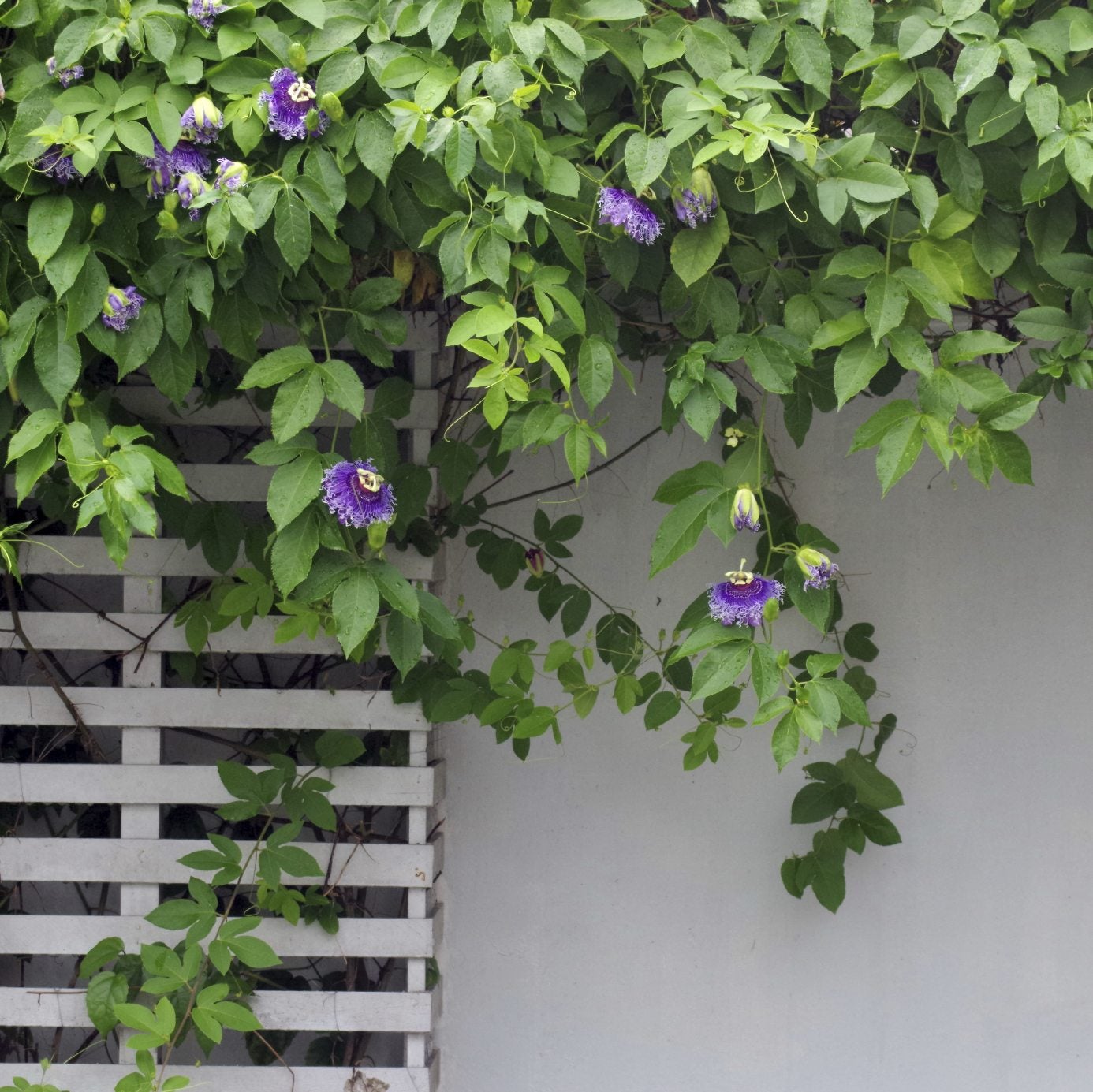Passion Flower Vine Pruning: Tips For Cutting Back Passion Vines


If you are looking for a plant whose flower resembles the art from a spyrograph in the 1970’s, the passion flower is your specimen. Passion vines are tropical to semi-tropical flowering and fruiting plants that need pruning and training by the second year.
Annual passion flower vine pruning will promote thicker stems, more flowers and bountiful fruit. Trimming passion vines during the growing season can help keep these vigorous plants in check, preventing them from taking over an area and choking out other plants.
Let's learn the right timing and methods for cutting back passion vines.
Passion Flower Vine Pruning
Passiflora vines are rampant growers that scramble up any vertical surface. Without training and some sort of support, the vines will creep over the ground and take over other plants' spaces. There are three reasons to cut passion flower vines:
- The first is to train the plant when young.
- The next is to promote thicker annual growth and higher fruit yields.
- The third is to rejuvenate damaged or old, neglected plants.
Plants in cultivation are grown up wires with a branching at the top that allows 3 or 4 horizontal stems to be trained for maximum growing surface. In the home landscape, the vine is likely tied to a fence, arbor or trellis. You can let the growth go unchecked, but this provides a plant that is difficult to harvest and has diminished exposure to sun for flower and fruit development.
Early training of the vine with soft ties will allow it to produce vigorous growth. By the second year, pruning becomes important to form a strong framework. Cut the plant back to the strongest 1 or 2 vines in very early spring.
These will produce thick growth and peripheral stems for more fruiting space. By the third year, the plant will have filled out and started producing flowers and fruit.
Gardening tips, videos, info and more delivered right to your inbox!
Sign up for the Gardening Know How newsletter today and receive a free copy of our e-book "How to Grow Delicious Tomatoes".
How to Prune a Passion Flower Vine
Here are some tips on how to prune a passion flower. Late winter is the optimum time for pruning Passiflora. This is because the plant is not yet actively growing, so cuts will not remove the season’s flower buds, nor will removing plant material shock the vine into decline.
Take out any broken, diseased or dead wood initially. Then, remove stems to those with numerous, healthy buds. The actual amount of plant material you remove should not be more than 1/3 of the plant's size, which means annual pruning is an important step to keeping the vine in a certain habit.
Some growers choose to leave the vine unmaintained, but this can result in fewer flowers and less fruit. Trimming passion vines lightly at any time of the year is acceptable to keep growth in check, but may result in the removal of some of the season’s buds.
Rejuvenation Pruning
Passion flowers are short lived perennials that can be killed by sustained frost. Short freezes on well mulched plants will result in the dieback of old material, but re-sprouting in spring from the roots.
In old or unmaintained plants, cutting back passion vines to just 1 or 2 strong stems will force the plant to regrow new stems, which can then be trained. The usual tangle of vines in old plants doesn’t form a good open pattern for light and air penetration, and often causes under ripe fruit, disease and insect problems.
Once the severe cut back has been accomplished in late winter, spring’s warmer temperatures will encourage new growth that is easier to manage.

Bonnie Grant is a professional landscaper with a Certification in Urban Gardening. She has been gardening and writing for 15 years. A former professional chef, she has a passion for edible landscaping.
-
 Looking For Plants To Give You The Soft And Fuzzies? Try These 5 Fuzzy Leaf Plant Options
Looking For Plants To Give You The Soft And Fuzzies? Try These 5 Fuzzy Leaf Plant OptionsLovers of texture, drama, silver foliage and tactile plants will adore these special sensory garden additions. These fuzzy leaf plant options will leave you all aglow
By Susan Albert
-
 Get Ready For A Summer Of Hummers! Grow These Full Sun Hummingbird Plants and Flowers
Get Ready For A Summer Of Hummers! Grow These Full Sun Hummingbird Plants and FlowersIf you’re lucky enough to enjoy a sunny backyard, make sure you are maxing out on your pollinator opportunities and grow these full sun hummingbird plants and flowers
By Tonya Barnett